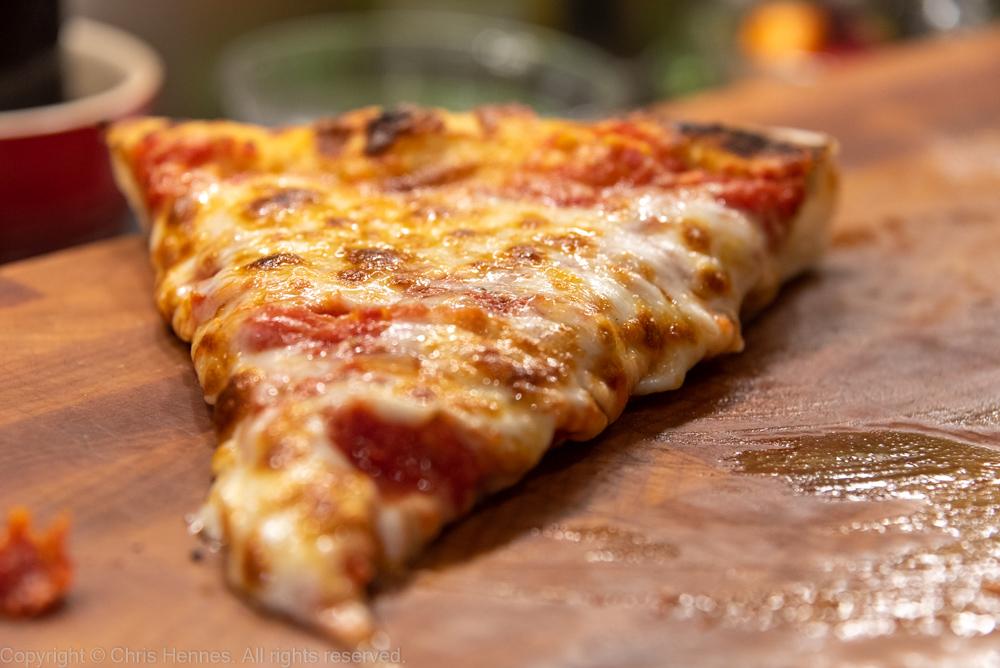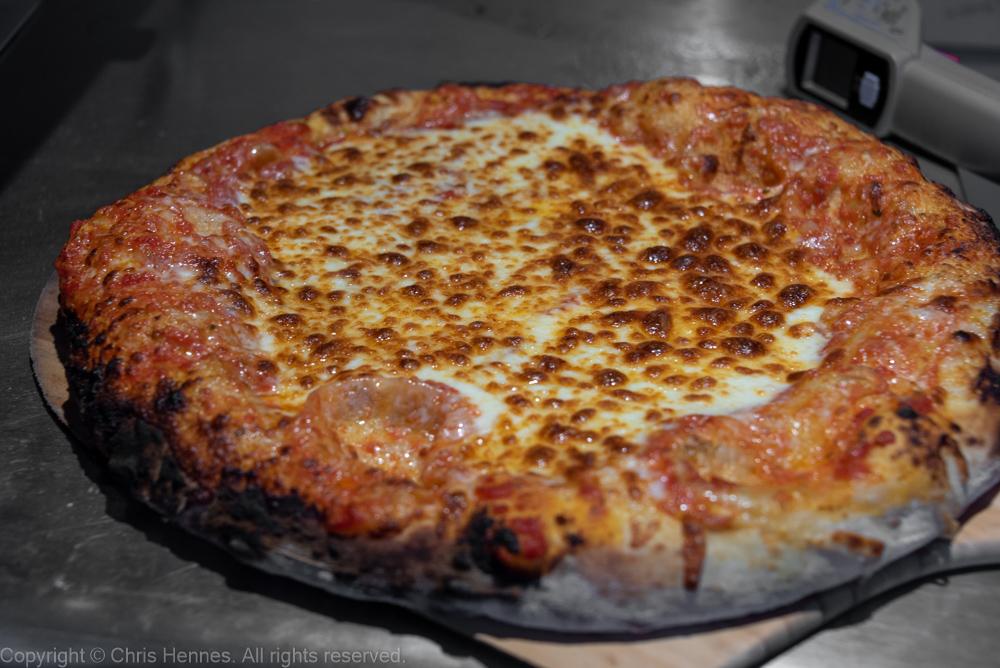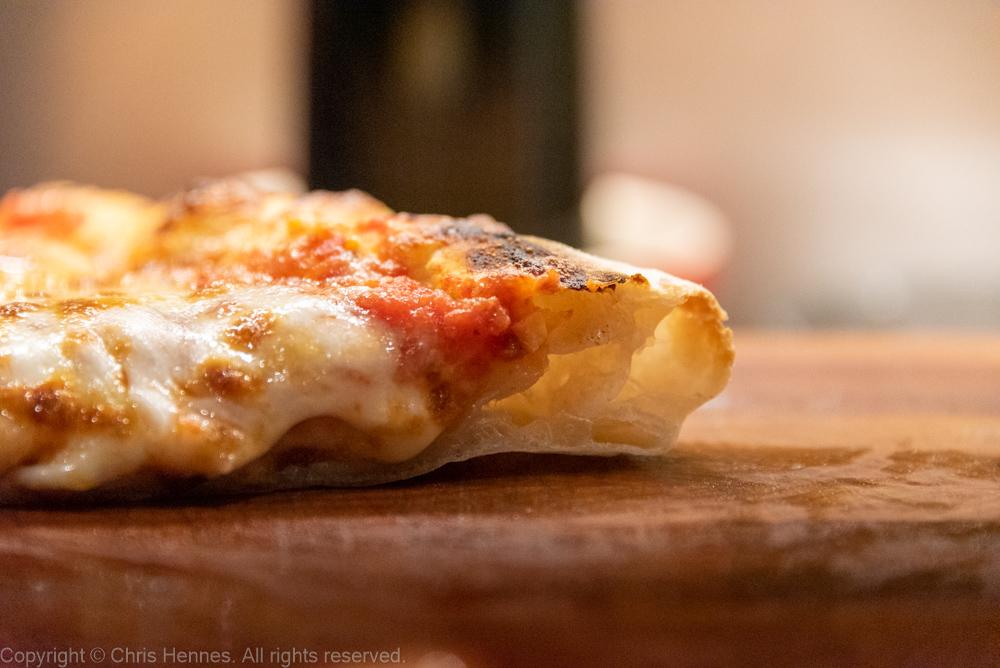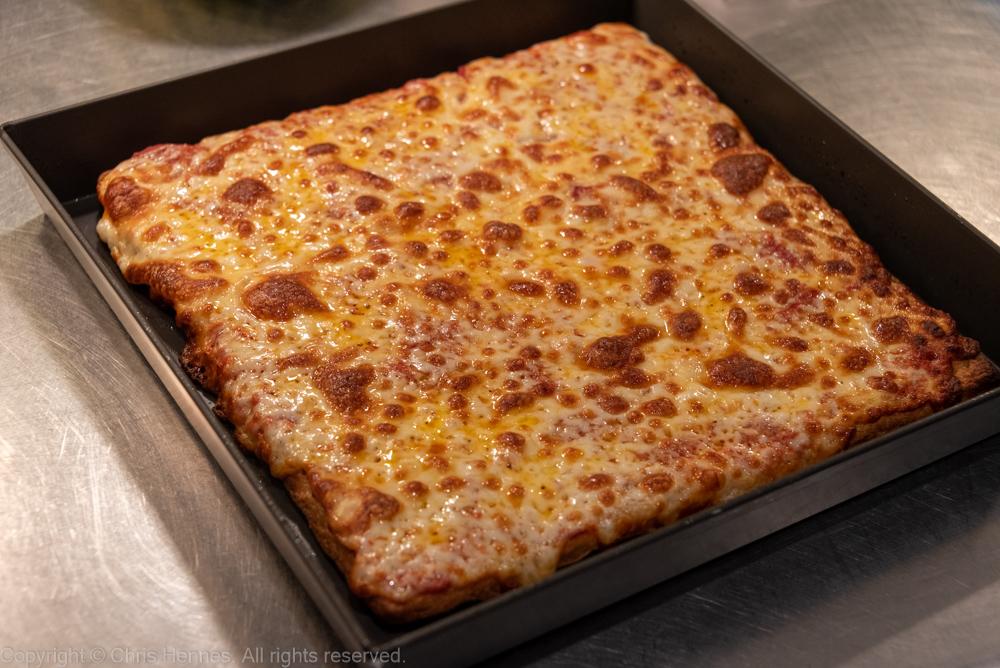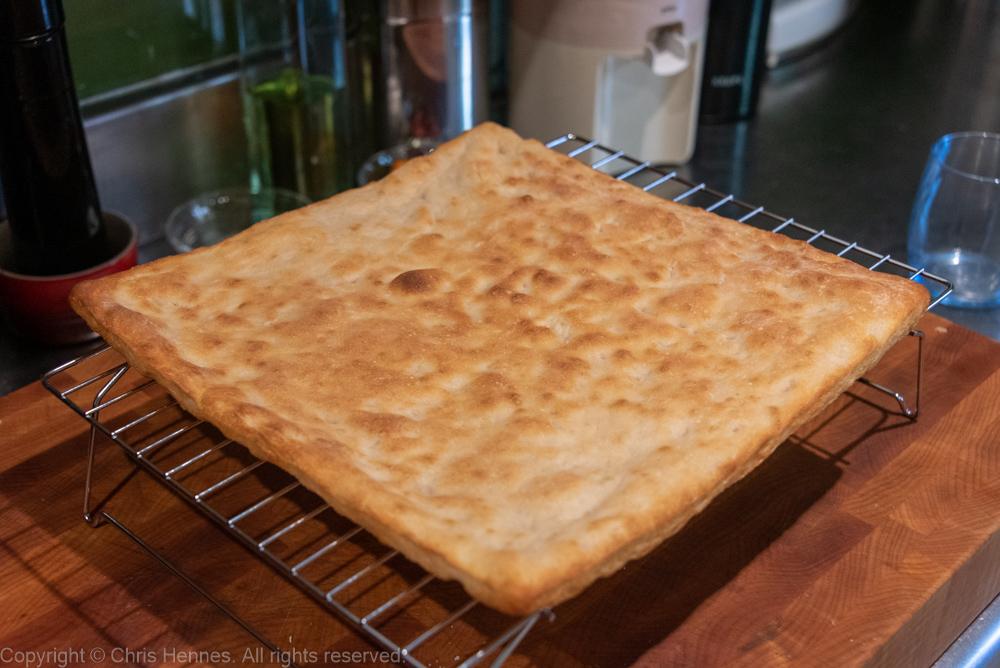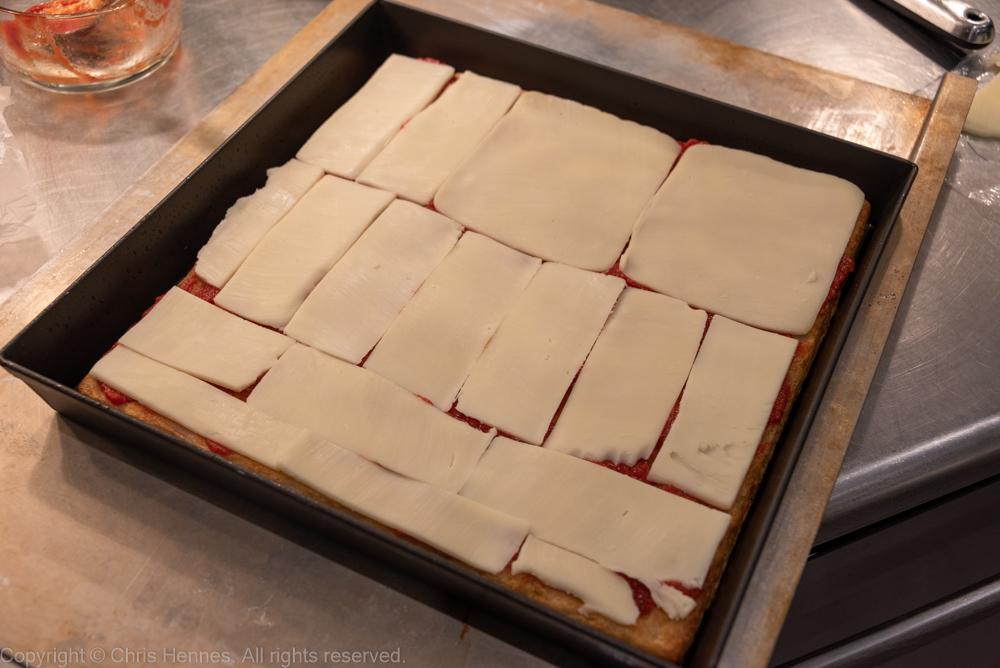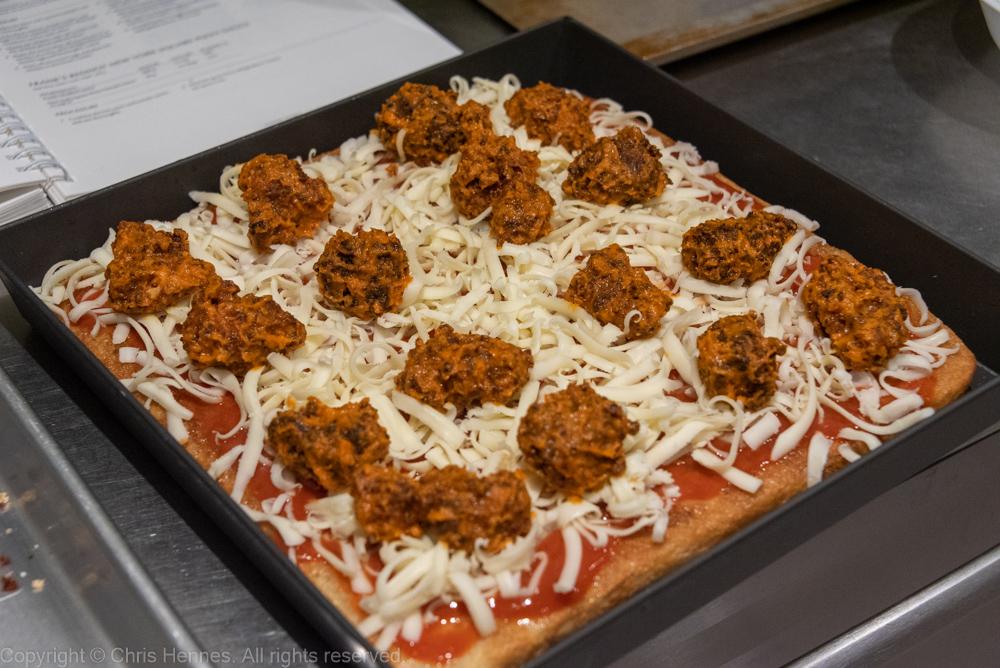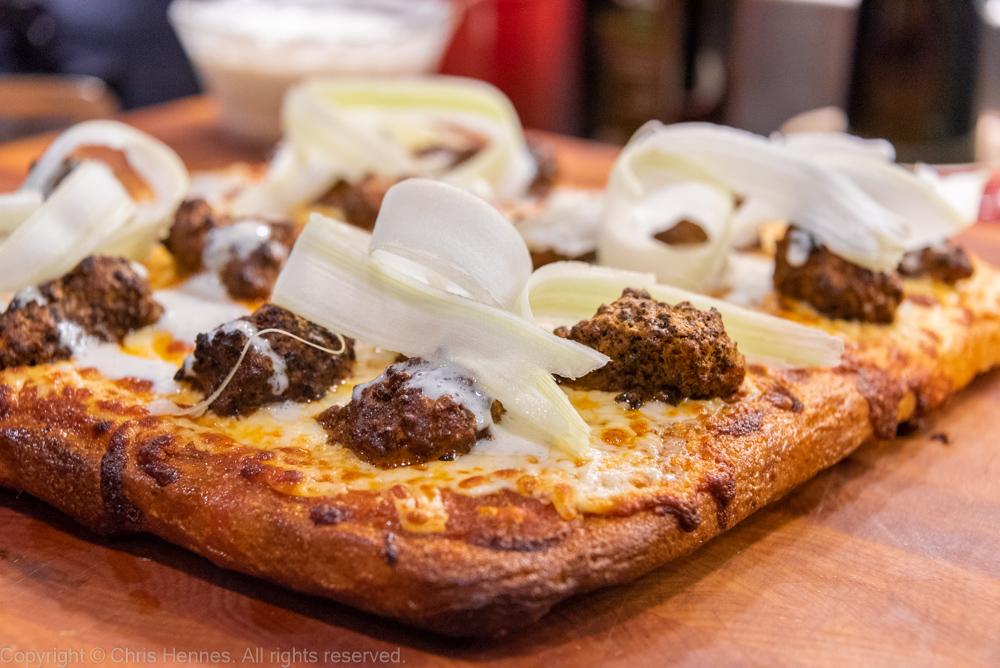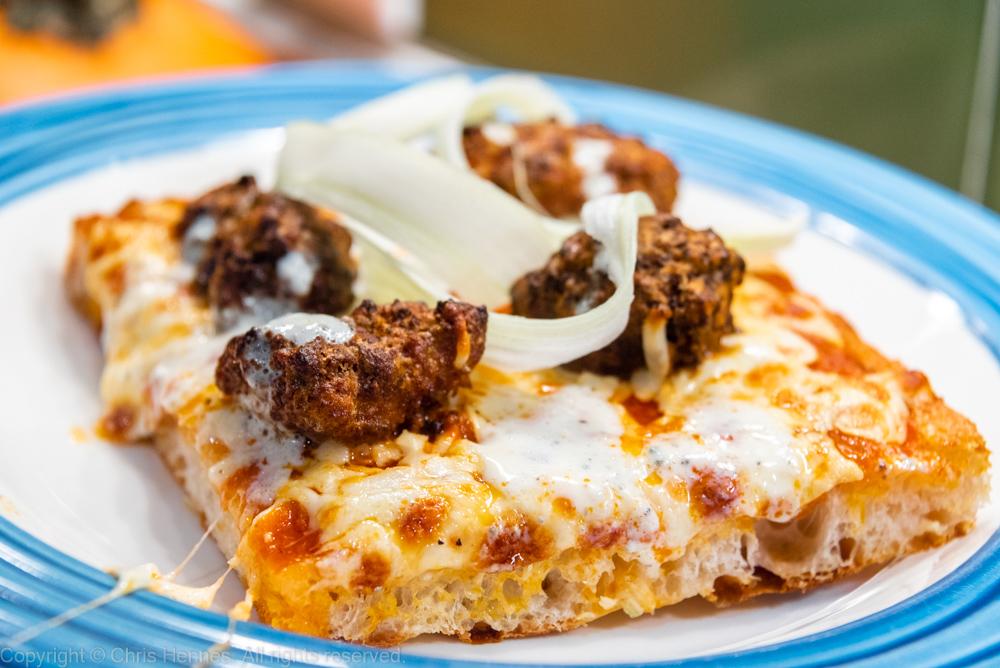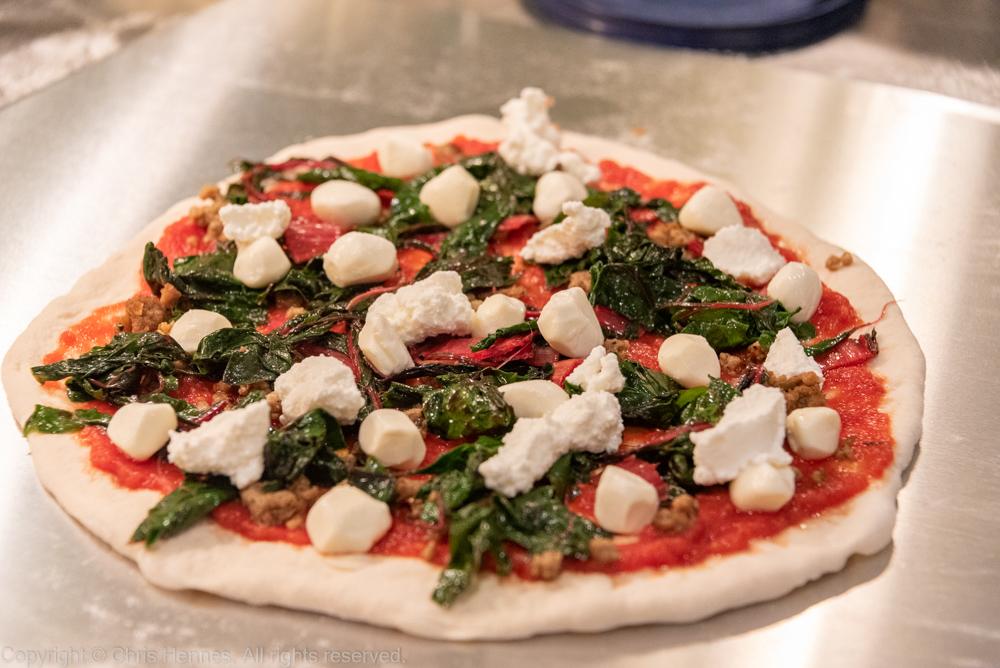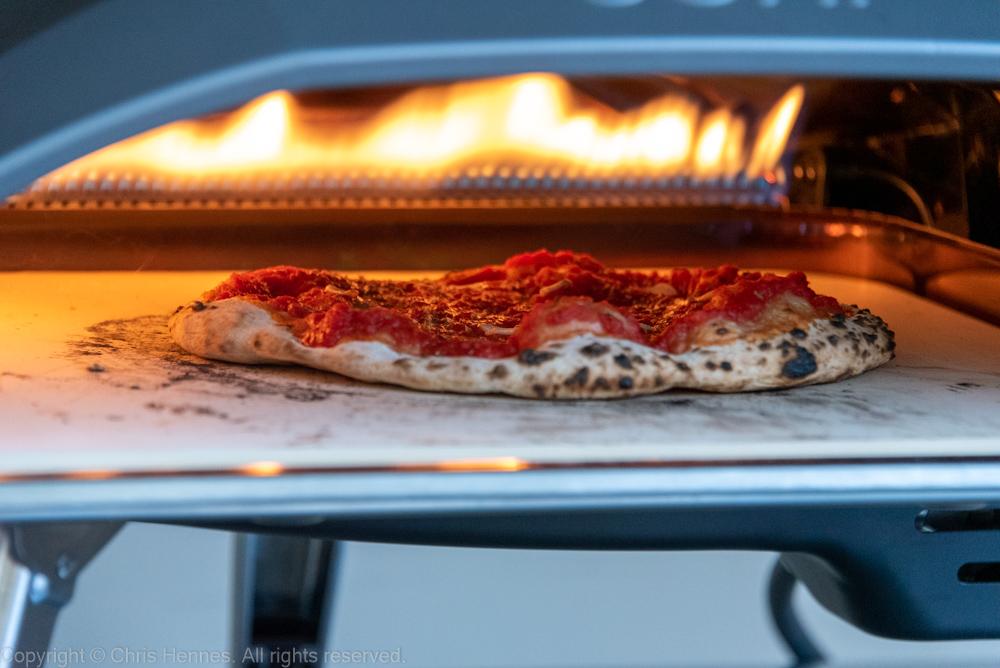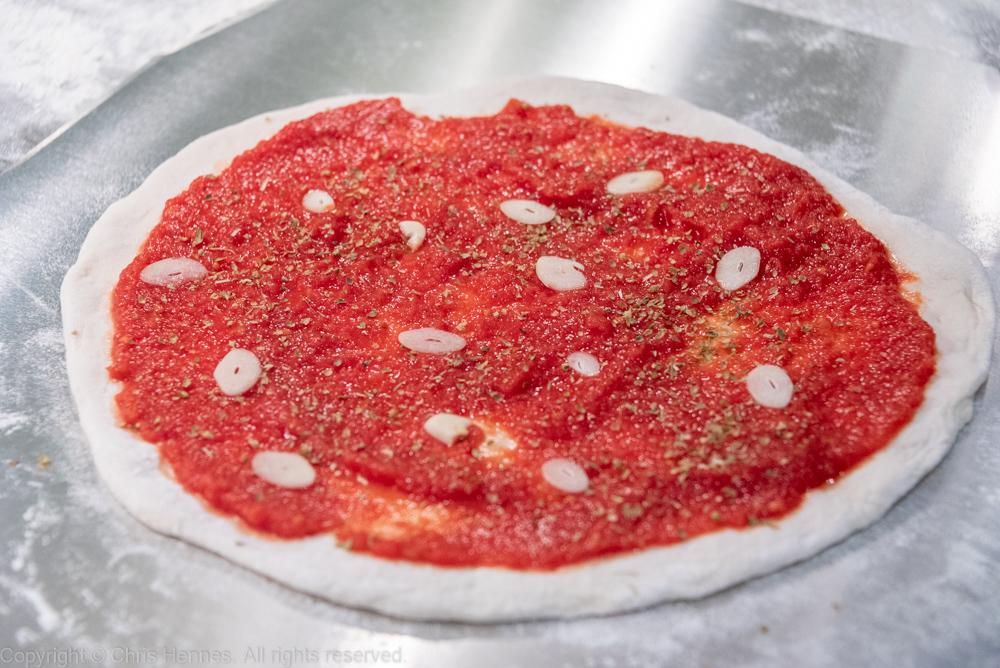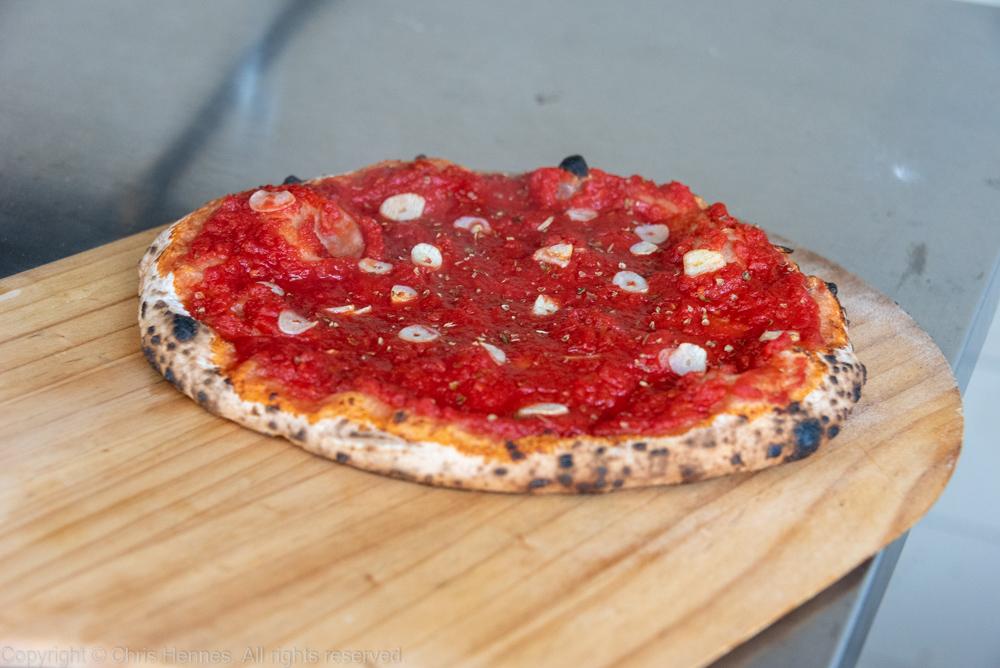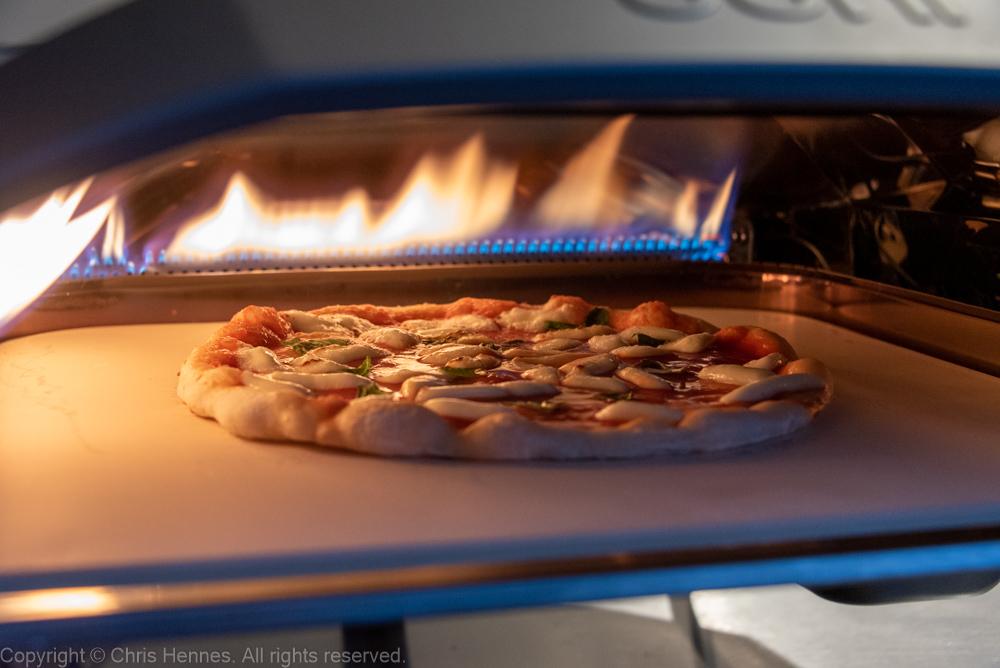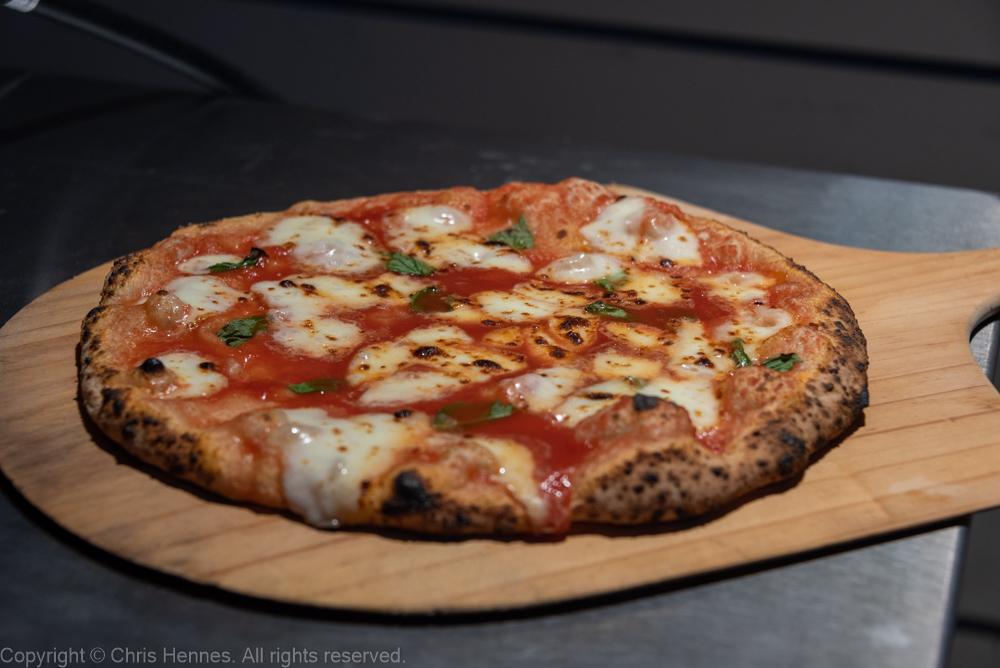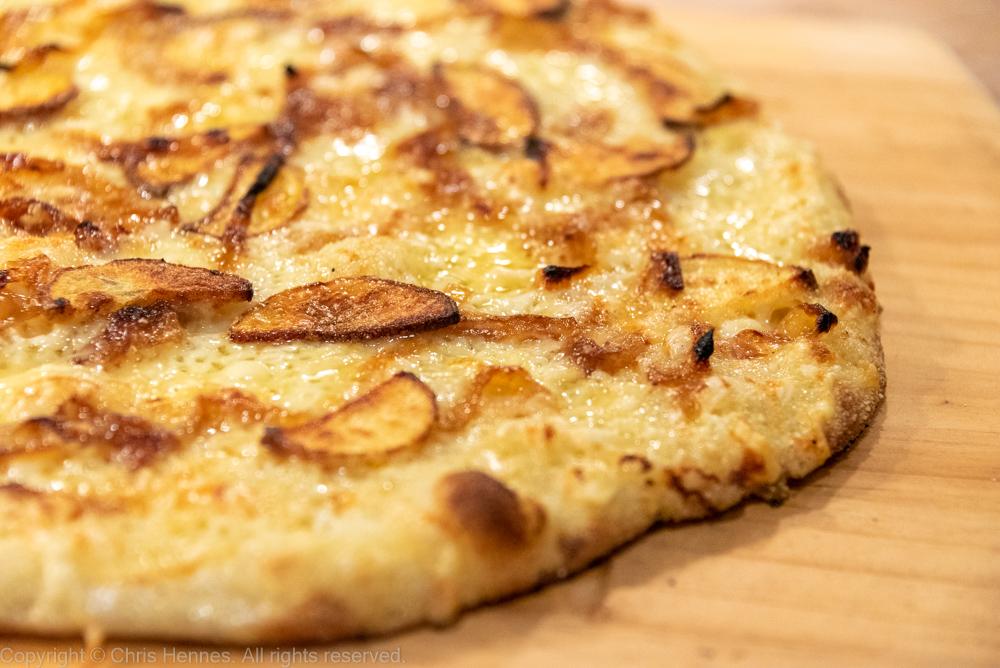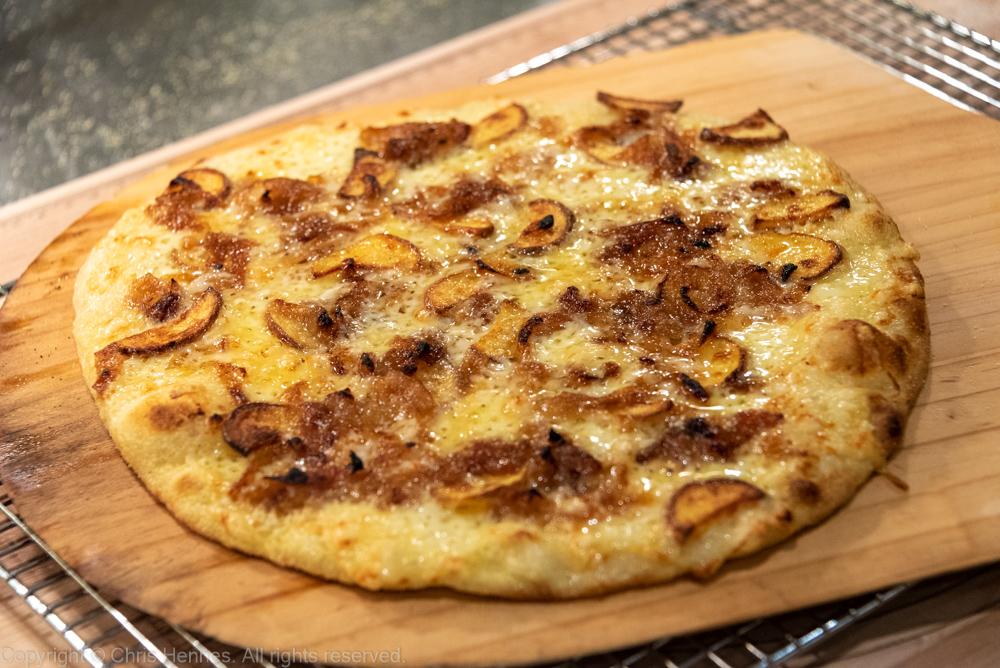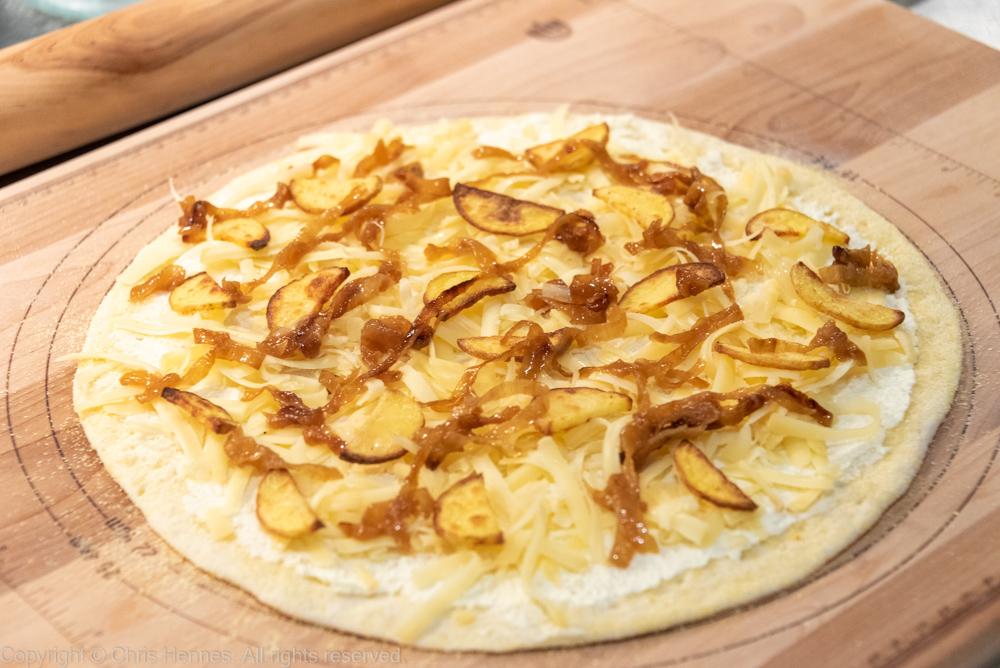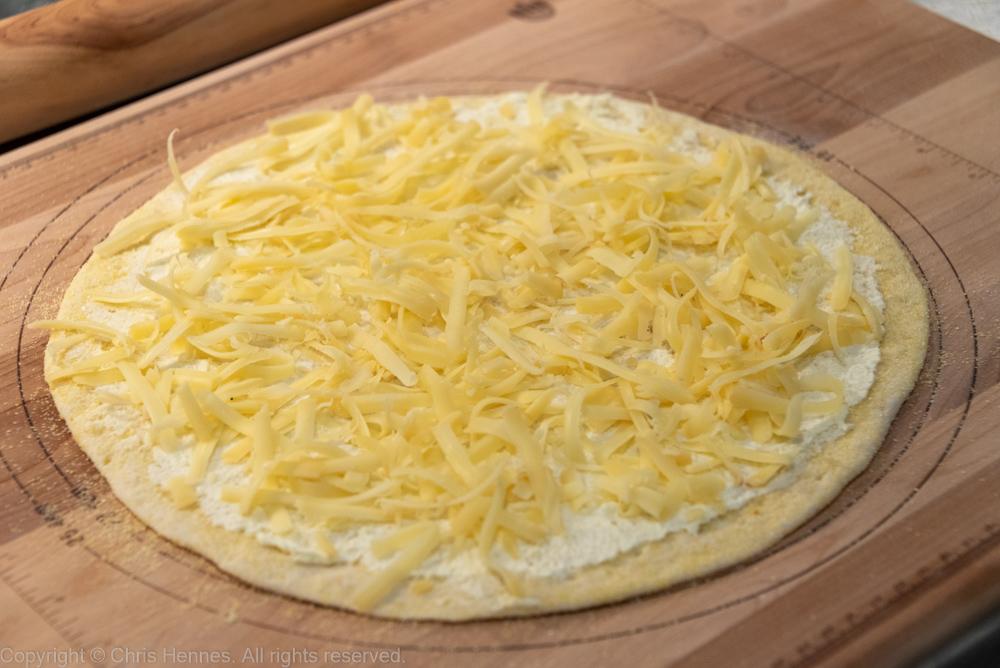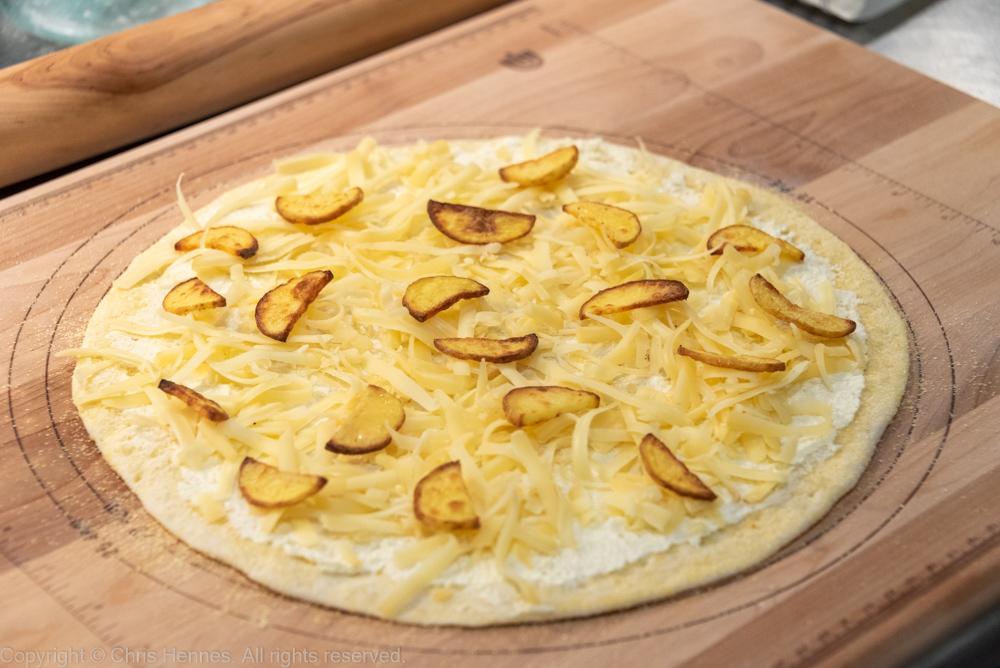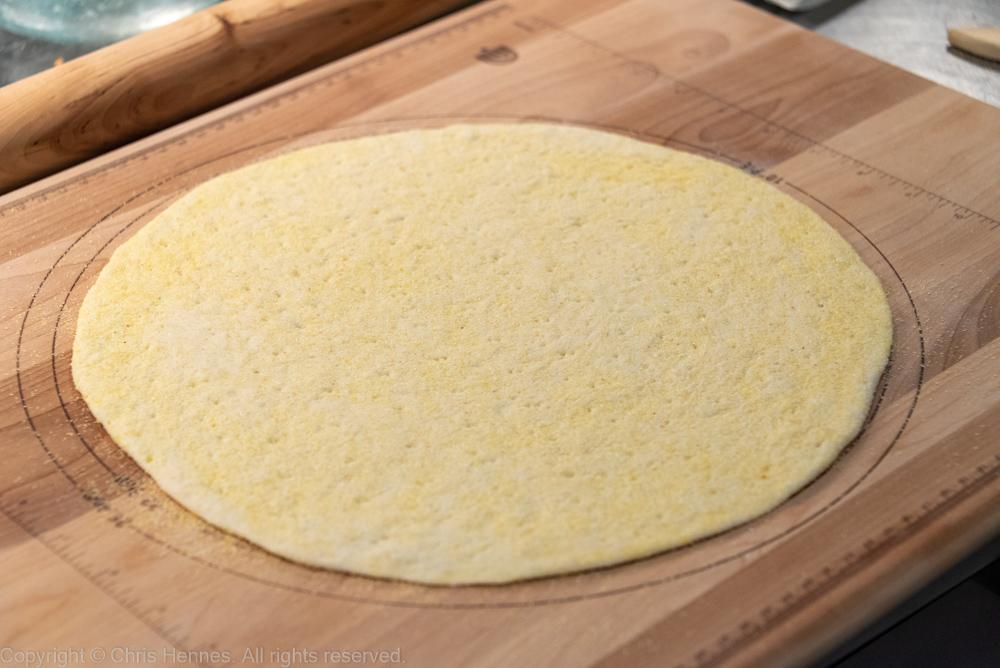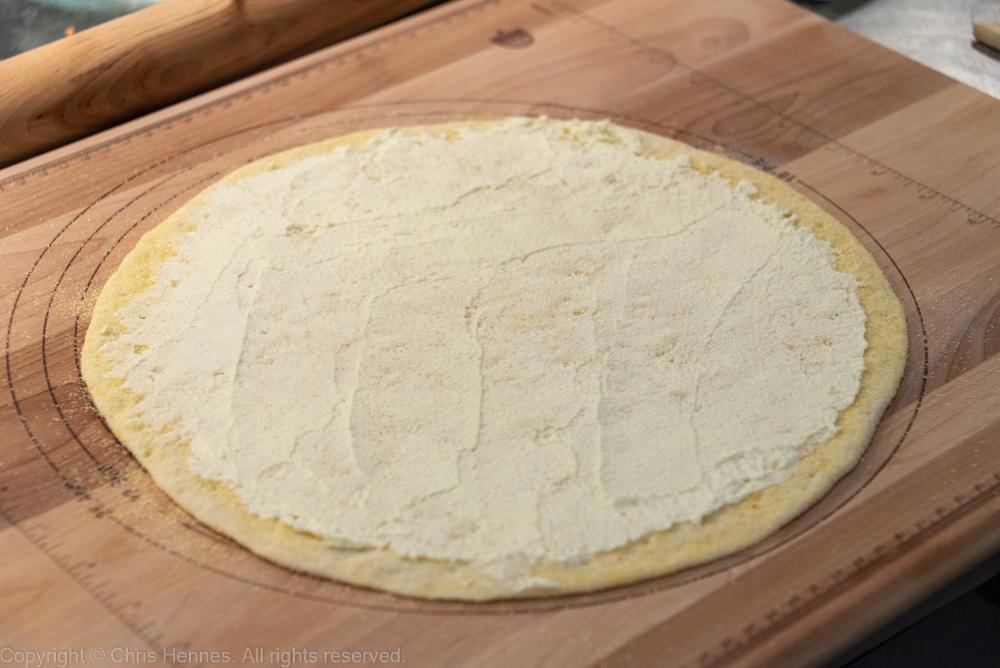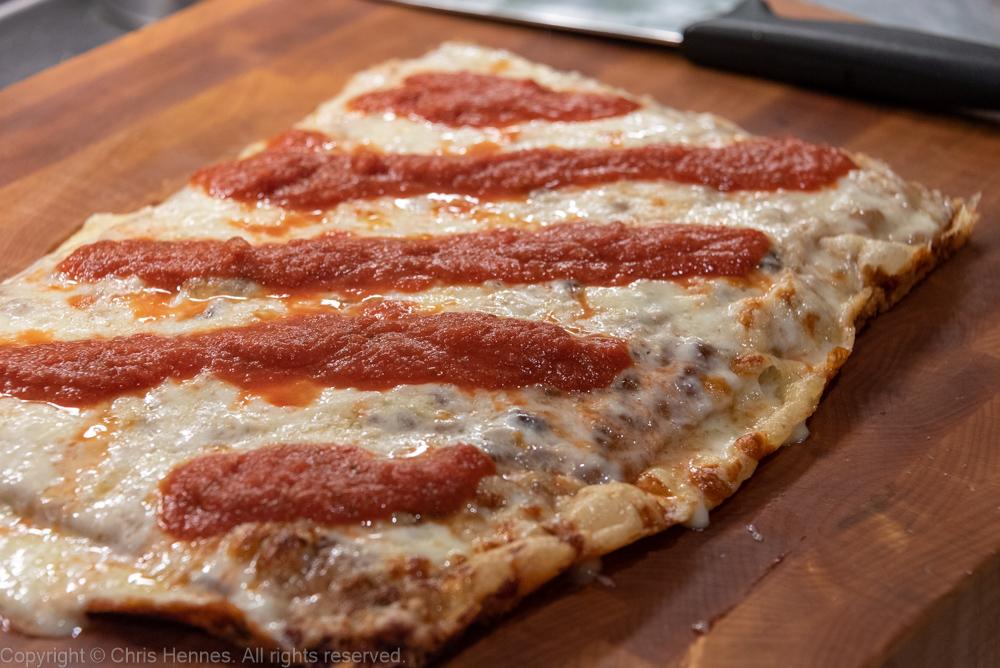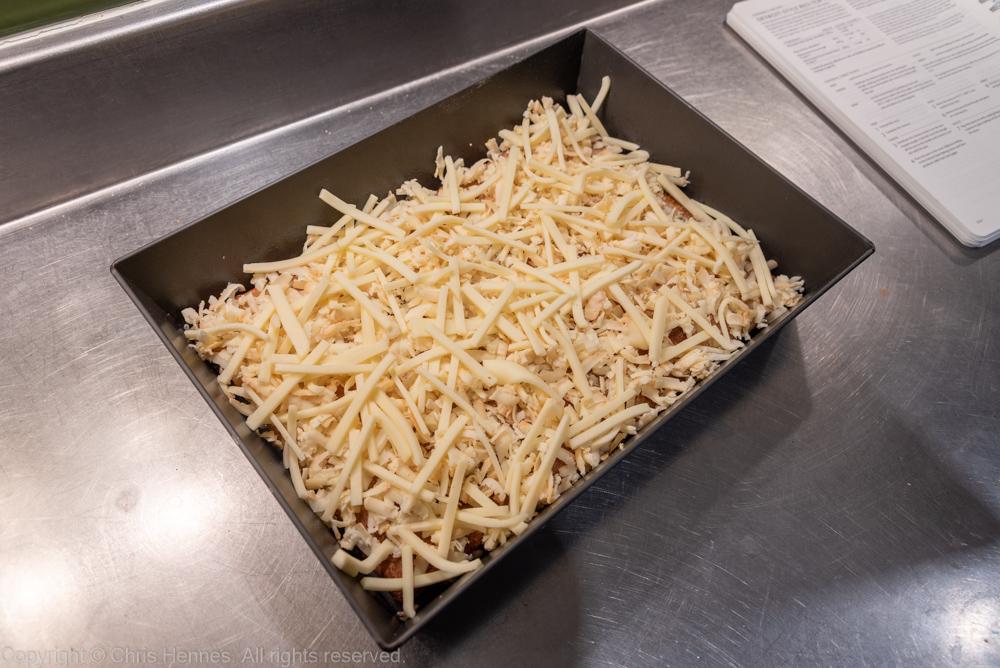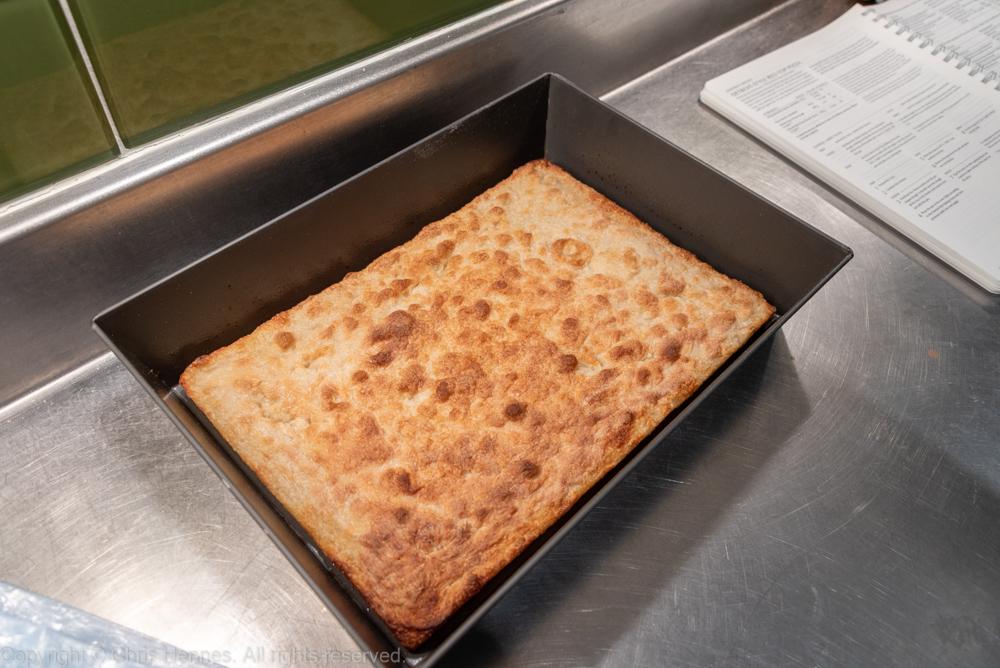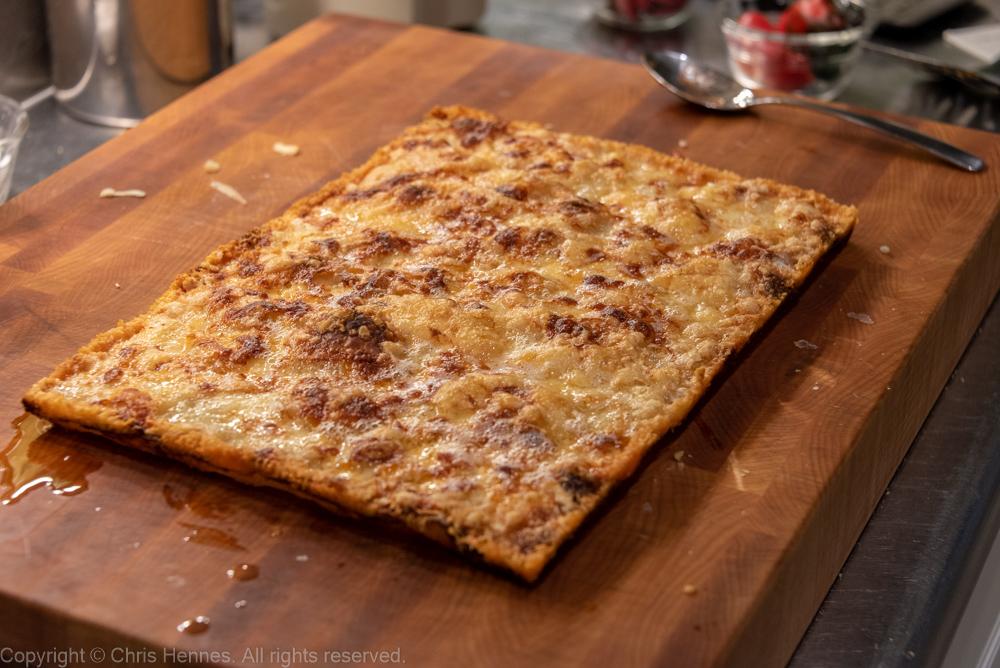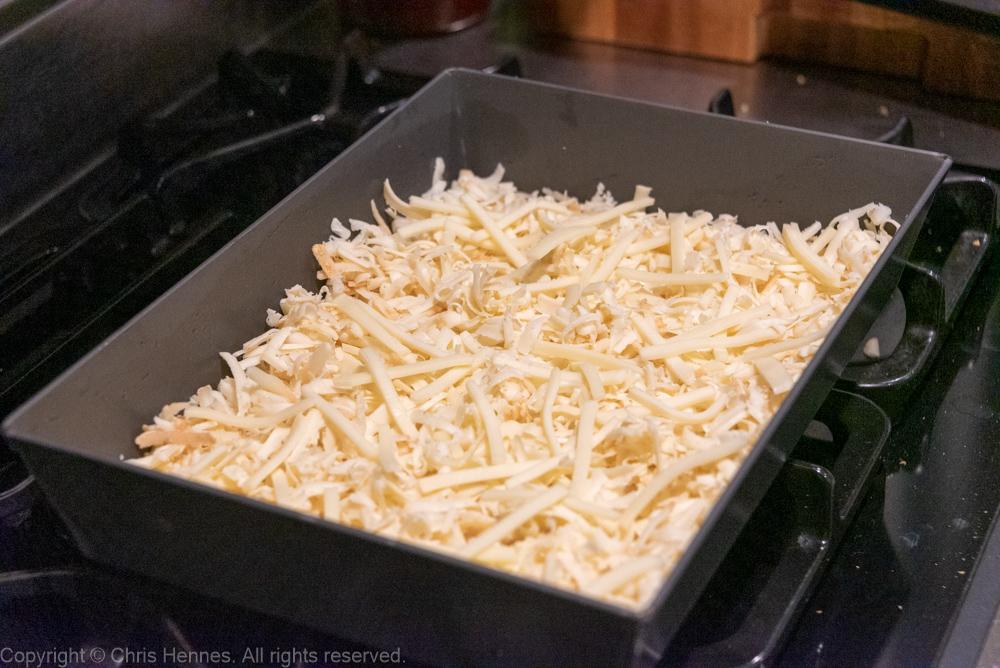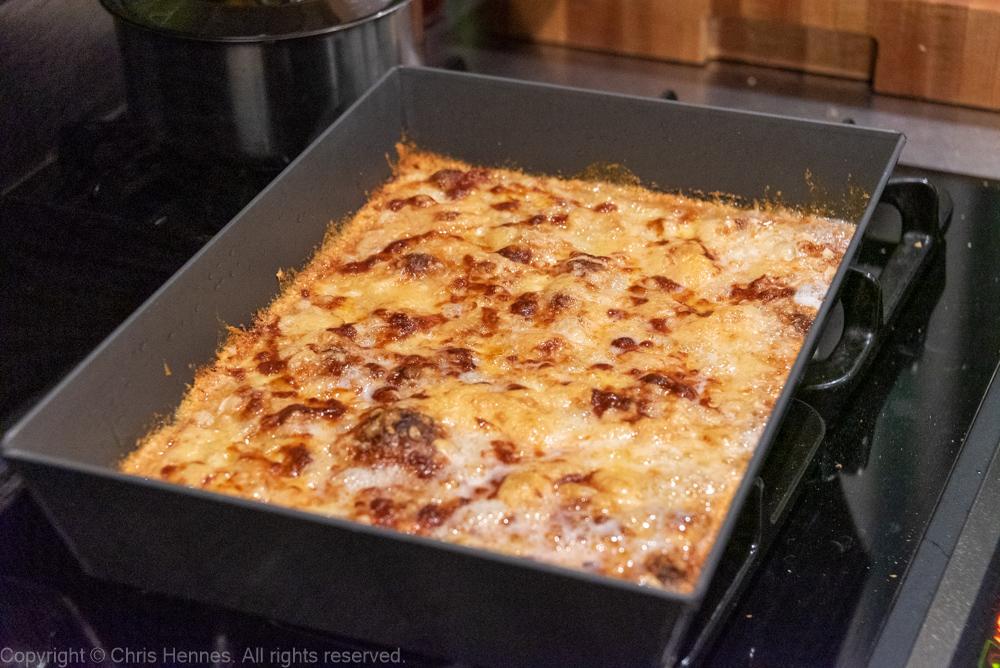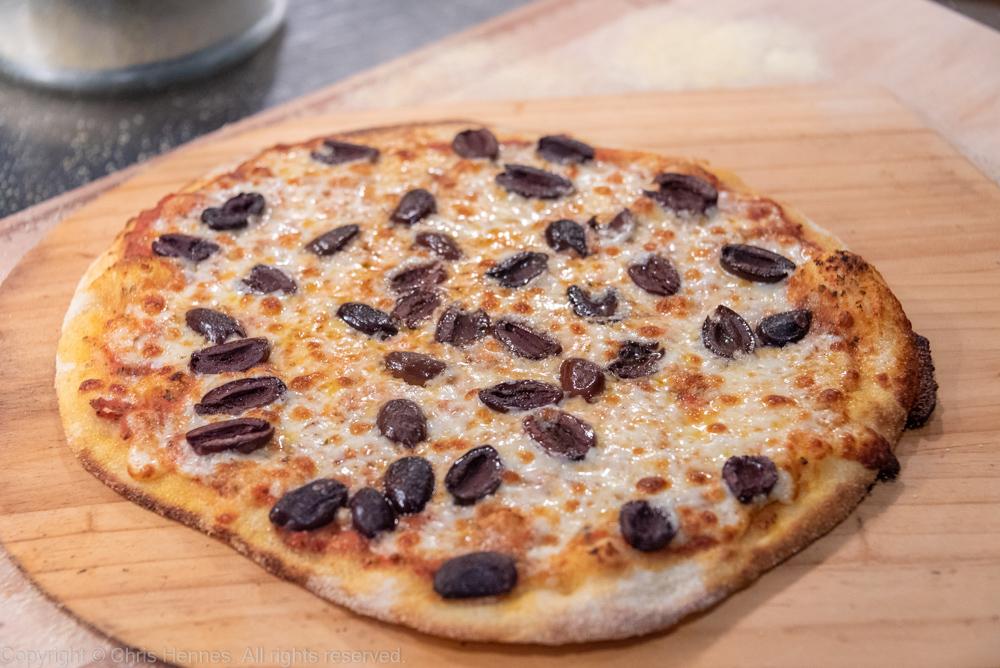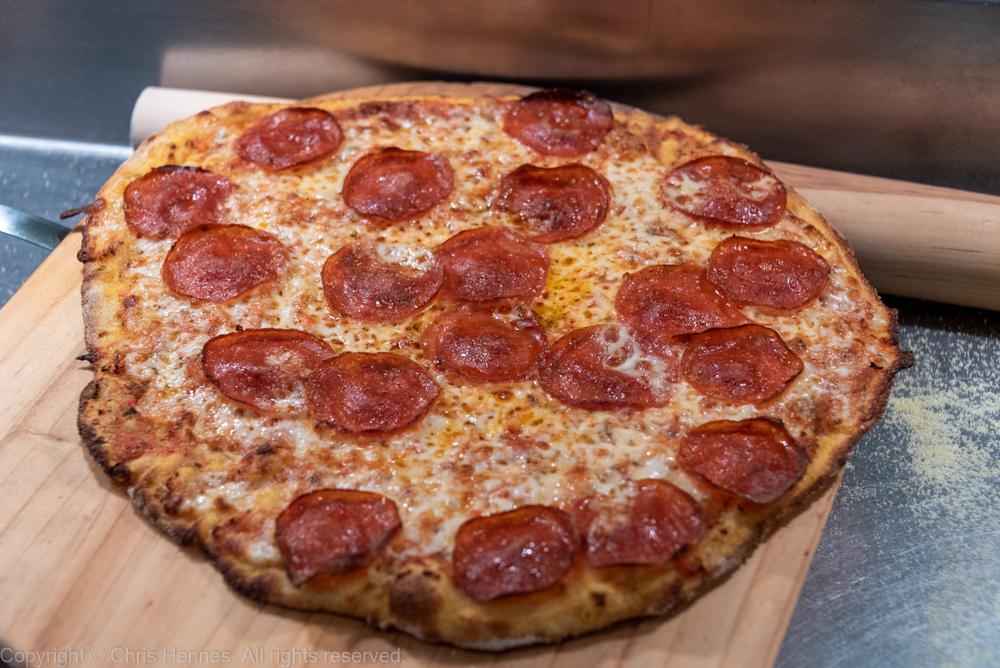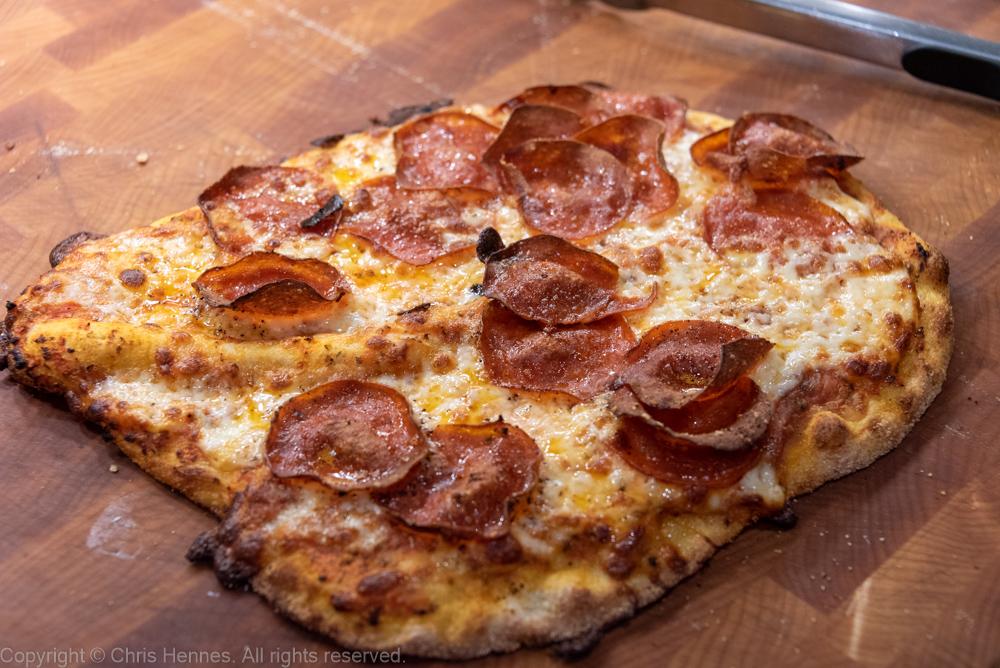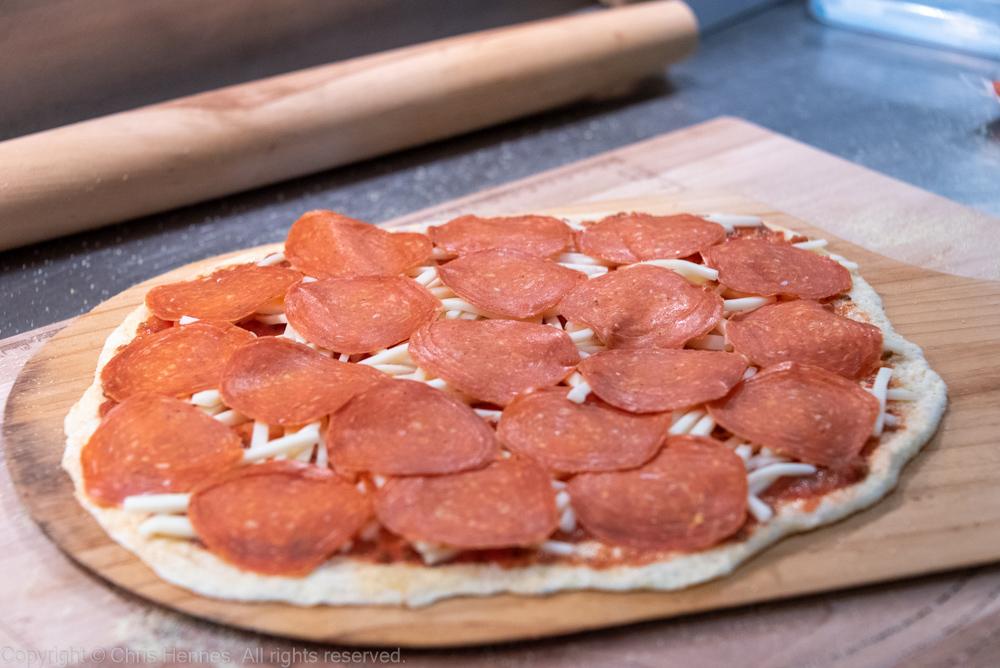-
Posts
10,190 -
Joined
-
Last visited
Content Type
Profiles
Forums
Store
Help Articles
Everything posted by Chris Hennes
-
OK, thanks, I was imagining them as being larger -- yeah, doing 12" in my home oven will definitely be better. I don't really know how to control the thickness of the outer rim very well, I'll have to re-read that section of the book.
-
Modernist Pizza agrees, their photos all look more like the ones @weinoo posted -- clearly, I have more work to do on my New York-style pizza-making skills! Well, all of my pizza making skills, really, but I thought my first go at Neapolitan was pretty respectable. In my mind NY-style pizzas are BIG, though, and I can't go any larger than about 12" in my home oven, and 16" in the Ooni. I am not sure where to compromise.
-
Haha, well, you probably should. And no, the crust did not deflate.
-
Or maybe it's operator error... probably not fair to judge the book's rendition based on my first, borderline-failure attempt at making it!
-
Doh! Great suggestion, thanks! Maybe there's hope for my 16" NY pizzas!
-
New York Cheese Pizza (KM p. 213) More learning experiences! Fantastic! This is the main assembly recipe for their "New York Style" pizza: it's a medium crust pizza with a cooked tomato sauce and pizza cheese. I wanted to experiment with making larger pizzas, and this seemed like a good candidate. The base recipe makes a 20" pizza, but even in the Ooni I can only make a 16", so I scaled the recipe down to 64% for everything. That's still a much larger pizza than the normal 12" that I make. Even at its lowest heat setting, the Ooni is hotter than ideal for this pizza: more like 650°F than the target 550°F. Managing the pizza in the oven was also tricky, because it was harder to turn without the extra room at the sides that I normally have. So, I wound up with a crust that wasn't really quite baked right. Still edible, but I need to do some more playing around with the Ooni to try to dial in cooking at the lower temperature setting. A word about the sauce: this is the only one of their classic tomato sauces that is cooked, and the recipe is considerably more complex than the others in that section. It smelled fantastic simmering away this afternoon, and the end result is delicious.
-
New York Square Pizza (KM p. 246) Normally I save the strange variations for after I've tried the baseline, but I had more time to screw around with breading and deep frying yesterday, today I was more time-constrained. So, this is the basic "New York Square" assembly recipe, which is just a cheese pizza, on a thick-ish crust that's been par-baked. They suggest using cheese slices to achieve even distribution in this case, so I did. And it worked, I guess, though I can't say I've struggled with cheese distribution problems with shredded. The sauce is quite thick compared to their other sauces, and is flavored with garlic, oregano, and tomato leaves. It has a sort of "classic pizza sauce" flavor. The par-baked crust (it flattened out when it cooled) -- I am struggling to call proof on these doughs when they are all stretched out like this, I think I under-shot this one by 15-20 minutes. It was still edible, but didn't quite achieve the crumb I'd have liked, which I got yesterday. Flipped over and topped: And baked:
-
But what if I wanted something else? Like... fried chicken? Oh, wait... Buffalo Chicken Pizza (KM p. 282) Just in case you looked at those last several pizzas and though "wow, I expected something really bizarre in Modernist Pizza, those all look totally normal!", I've got you covered. They do, in fact, present quite a few more unusual specimens. Case in point, a pizza with a sauce that is 90% Franks RedHot, topped with breaded, fried, and Buffalo-sauced chicken thighs, blue cheese dressing, and shaved celery. This is all served on a "New York Square" pizza dough (which I was disappointed to learn was not usually baked in a square pan, an obvious mistake I have remedied here). The dough is prebaked, cooled, then flipped over, topped, and reheated. This worked much better in this case than in my last attempt at such a thing. Yeah, probably not going to make this one again. It was OK (as long as you REALLY like Frank's RedHot), but I think the sauce proportions were exactly backwards, I'd have used 200g of pizza sauce to 25g of Frank's, not the other way around. That much Franks reads a bit too salty for my tastes. And I probably should have actually made a real blue cheese dressing, instead of just blending Gorgonzola with buttermilk and calling it a day (too much buttermilk, alas).
- 549 replies
-
- 12
-

-

-
Sausage and Swiss Chard Pizza (KM p. 272) In addition to all of the "Assembly" recipes (which is what I've been posting so far), they have a bunch of tables of dough/topping/sauce/cheese combinations, broken down into "Classic," "Inspired by Italian Ingredients or Dishes," "Inspired by Pizzerias/Pizzaioli", and "Modernist." This is one of the "Classics": the toppings are tomato sauce, smoked mozzarella, sauteed chard, crumbled Italian sausage, and ricotta. I subbed regular mozzarella for the smoked. I played around a little with the Ooni, only preheating for 30 minutes, and trying "doming" the pizza at the end. Which lit the chard on fire (cue joke about charred chard). Even so, it was still edible. Actually, it was delicious, but probably would have been better without the extra pyrotechnics.
- 549 replies
-
- 12
-

-

-

-
Marinara Pizza (KM p. 206) Same dough as last night (not double-aged, I made it yesterday and it rose for 24 hours: so the same recipe as last night's, not the same batch of dough). The sauce for this one is a can of whole tomatoes, crushed, drained, and partially reconstituted to a thicker texture than the original crushed tomatoes. Obviously, using a tomato you like the taste of is critical here, since there's really nothing covering them up except a clove of garlic and a splash of olive oil. In this application (which has a LOT of sauce) I did like the fully sauce recipe. The sauce was thick enough to stay put when loading, unloading, and eating.
-
They drizzle the olive oil on top, which is apparently the common method in Naples, so it's in there.
-
Margherita Pizza (KM p. 203) OK, enough goofing around, it's time to get serious and pick some fights! I finally had time today to set up my new Ooni Koda. While with every pizza style out there you can find advocates and haters, I doubt any style of pizza inspires more passion (and more vitriol!) than Neapolitan. Obviously Modernist Pizza spends a great deal of time talking about the pizzas, pizza-makers, and marketing organization behind this style, and of course they have some opinions about it all. But actually, when push comes to shove their baseline recipe hews pretty close to what you'd expect, and they do indeed recommend cooking it at 850°F. The dough is direct, sort of: although it doesn't have a pre-ferment, in a way the whole thing is a pre-ferment: the base recipe calls for just a tiny fraction of a teaspoon of yeast, and bulk proofs at room temperature for 20-24 hours. They recommend a few different 00 flours: I used Caputo Red, because that's what I have. It's a 62.3% hydration dough, with 2% salt. It tastes very good, even with my rank-beginner pizza-baking skills. Of course, more practice is necessary. Damn . The one thing about their margherita recipe that I thought was a bit off was the sauce quantity. The sauce is very thin (as expected for something cooked at this temperature), it's just a can of whole tomatoes, driven through a food mill and seasoned with 1% salt. Their assembly recipe calls for a 250g dough ball, stretched to 12", and topped with 120g of sauce, 250g of cheese, and a bit of basil (which they want under the cheese). That much sauce made for a very soupy pizza, however: So for the second pizza a only used about 2/3 of that (I didn't measure though): I thought that was closer to my ideal sauce amount. Both pizzas were delicious, of course: this is another one that's really pretty hard to screw up so badly that it doesn't taste good. Always room to improve, of course! They suggest baking at 850°F, but when I measured the back corner of my oven it was actually hovering around 950°F, so I was probably actually a bit hotter than ideal. I will continue working on it .
- 549 replies
-
- 12
-

-

-
Raclette Pizza (KM p. 305) This one is in their collection of "interesting" toppings (e.g. not the classics chapter). The sauce is just crème fraîche, the cheese is Raclette, and the other toppings are roasted potato slices and caramelized onions. There was supposed to be parsley, but I'm out, so no greenery on mine tonight. They suggest this on their thin crust, which is what I did. It was delicious, though I'd probably have preferred more substantial potato slices. They instruct to slice "thin", but that's a pretty wide range when you're talking about a potato.
- 549 replies
-
- 11
-

-

-
No, Detroit is its own style, it's not billed as a subset of another (except in broad "this is thick-crust" terms) -- the deep dish crust is totally different, and much thinner.
-
Chicago-style Deep Dish is one of their "fundamental styles" of pizza, so it is fully-represented in the books.
-
I had another "learning experience" today. This one was not particularly edible. In the section on Detroit pizza they have a variant in which you pre-bake the crust, then some time later (hours, days, even weeks if frozen) you top it with the cheese and bake to melt. So last night I made the crust: Right, so the problems started right away. Overproofed? Overbaked? Yes to both, most likely. The dough actually pulled away from the sides of the pan, which I've never seen before: I suspect overproofing to be the main suspect here. I baked at the low end of the baking time scale, but I also think it's probably overbaked. Well, pressing forward... the cheese: This is Detroit style, so it's a lot of it. And you can guess where it's going to end up: So on the plus side, the cheese tasted better today because it wasn't overcooked. On the downside, the crust was nearly inedible, and the cheese didn't get crispy edges. The crust was weird-textured, too chewy, and basically unpleasant. This baking schedule is too convenient for me to just give up, but it was not a great start for the pre-baked crust school of pizza making.
-
In a "direct" dough there is no pre-ferment (poolish, biga, levain, etc.). It's just a ~3 hr proof right in its pan.
-
Detroit-Style Red-Top Pizza (KM p. 234) This is a basic cheese "Detroit"-style pizza. The Detroit dough is a direct dough with 85% bread flour and 15% semolina, a very small amount of sugar (1.39%) and about 70% hydration. The Modernist variant adds a dough relaxer, which seems like a pretty obvious improvement for a pizza baked in a pan, so I added it. The astronomical amount of cheese is mostly Wisconsin Brick cheese (225g on a 500g 10in x 14in crust) plus 110g pizza cheese. The pizza is baked without the sauce: The Detroit sauce is made from a blend of canned whole tomatoes, canned crushed tomatoes, and canned tomato sauce, plus salt, oregano, and olive oil. It's added in stripes (I just used a spoon) after baking: Overall the taste was good: I was surprised by how piquant the Wisconsin Brick Cheese is. I've never had it before, and was honestly not expecting that much in the way of flavor given its sort of generic name. But when you buy a 5# chunk of it, it does indeed come looking like a brick, so I guess the name makes sense! My one objection is that I feel like the cheese was overcooked by the time the dough was done. In fact, I'd probably have cooked the dough a bit longer still. They provide a recipe for a variation where you bake the crust entirely separately, then rebake to melt the cheese. I may try that next, I think it might improve on the texture.
- 549 replies
-
- 11
-

-

-

-
Repeating last night's dough, but with one more day of age on it. As expected, it was much easier to work with tonight, as the effect of the relaxer decays over time. A more creditable pizza-looking pizza resulted, with the toppings more or less where I put them in the first place:
-
Totally possible: I've only ever used a wooden peel, and that's all I've got at the moment. We'll see how things develop as I move onto higher-heat pizzas. Regarding their recommendations, they have extensive discussion on ovens, for sure: which oven is best depends on which style of pizza you are making. I don't recall them having too much to say about peels, except to note that there are different kinds.
-
No, it's exactly the same as the dough without it.
-
Modernist Thin Crust Pizza Dough Well, chalk tonight's pizzas up as a "learning experience." It was not an abject failure (we did still eat the pizza!), but definitely not a success. I was making the Modernist variant of the Thin-Crust pizza dough. It's basically the same as the regular, with added polydextrose for crispness, and a dough relaxer to make life miserable to make the dough roll easier. So the additional polydextrose is an incremental improvement: the dough was a small bit crispier. My relaxer of choice is usually bromelain: I've got a jar of it cut 1000:1 with flour to make it possible to measure on a normal scale. The recipe calls for 0.0005% bromelain (there are some other relaxer options that can be using in slightly less absurd quantities, but I already had the bromelain, and I've worked with it before). As far as I am aware, I scaled everything correctly, and measured correctly when producing the dough. And the dough did work nicely, it was very easy to roll out. But either it lacked the strength necessary to actually slide off the peel intact, or I lack the skill with the peel to make it do so. I had to be really sharp with it, which made all the toppings shift on the first pizza, and the second pizza was just a train wreck. To be honest, I'm not a fan of the relaxer in this application, I don't think the dough really needs it. So although I'll keep the polydextrose addition, I'm sticking with the normal thin crust recipe otherwise. This is the La Quercia pepperoni -- it's a very thinly-sliced product, so by weight that's really not much pepperoni. The first pizza was sort of OK. The toppings shifted, but it was not a total catastrophe: The second pizza, on the other hand...
-
For this dough I used King Arthur Organic All-Purpose (11.7% protein), because that's my normal bread flour. They recommend Ceresota Unbleached Forever All Purpose Flour (eG-friendly Amazon.com link) for this dough. As usual, their chapter on ingredients delves into great detail about flour, and in this particular case I doubt I'm going to be able to discern a difference. But obviously in the interest of science I have to test that, I feel morally obligated to make this pizza again (did I mention it was delicious?).
-
Not this one (they have a lot of sauce recipes, of course). Tomato, oregano, salt.
-
No fat: the only thing unusual is the inclusion of cornmeal.



